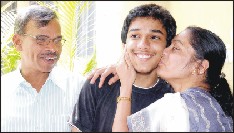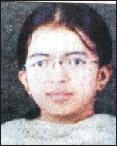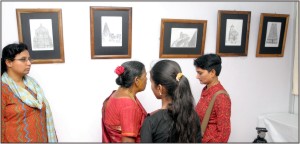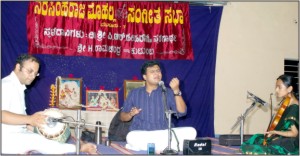Bangalore:
The ‘Sound of Music’ is one that will reverberate in the lives of those who breathe, eat and drink music. One such passion driven individual, who sings with his heart, is Belakavadi Rangaswamy Iyengar. In the overwhelming era of ‘Jhankar Beats’ and commercial tunes, traditional musicians rarely find a place to fit in. However, with his vibrant melodies and powerful voice he continues to uphold the family legacy, by indulging and immersing himself in the blissful ocean of raaga, taala and bhava. Having celebrated his 90th birthday last week, he is probably one of the oldest Carnatic musicians in Bangalore second only to R K Srikantan.
Well acquainted with all forms of Carnatic music, he specialises in singing
‘Pallavi’. A seasoned audience at a regular ‘Kacheri’ will be able to spot his tact in inaugurating the Varna and concluding the ‘Ragatana Pallavi’ with the same raaga. CP Rangaswamy Iyengar, his principled guru, endowed him with the rare art of mastering ‘Ragatana Pallavi’. His music is regularly punctuated with trills and challenging raagas, his favourite being the profoundly melodious and delightful, Todi and Kambhoji raagas. Many iconic figures of Carnatic music graced him with their teachings and appreciated his love for music. Some of them are Tiger Varadachari, Tirumakudalu Chowdiah, Veena Subbanna and Veena Sheshanna.
Over the years, the artiste has performed individually and in collaboration with other musicians, at many state level sabhas. He enraptures the crowds with his hypnotic voice and transcendental execution of traditional Indian music. In 1959, during the celebration of Hanuman Jayanthi, which also served as his first ‘Kacheri’, an enchanting performance was inscribed in his memory. Three generations of Belakavadis, with Rangaswamy as the lead vocalist, son BR Sridhar and grandson LV Mukund (flute), captured the attention of the listeners in a bewitching musical endeavour. “It was an unforgettable evening”, he recalls. Yet another surpassing event added to his collection of memorable performances, during the Ram Mahotsava celebrations at Shimoga. The musical standards of the evening soared with the presence of violinist, M Chandrashekar. According to Rangaswamy’s family, he even set down the instrument and bowed to him to commemorate his superior quality of music.
Coming from a family of renowned musicians, the culture of orchestral music was imbibed in his blood and flowed through his veins. Having learnt from his father, B Srinivas Iyengar — an extremely popular musician of his time, Rangaswamy and his brothers practised a ‘voice culture’ throughout their training period. “From 4 to 8 in the morning, my brothers and I would rehearse from A-kara to O-kara in three varying speeds”.
With such rigorous training and discipline he was able to develop his gifted voice, and channelise his vocal strength in a positive direction. A traditional Iyengar, he never gave up on food or followed a strict diet. He believes that discipline and self imposed coaching is the key for developing an efficacious voice. Apart from music, he was extremely pro active in sports. He was an acclaimed football player, local wrestler, yogi and an athlete.
He has many awards to his credit some of which are the Karnataka Rajyothsava Award, Nritya Academy Award and Karnataka Sangeetha Vidwan Award.
Yet, he is disappointed that his music could not bring home a national recognition. Having taught hundreds of students worldwide, he is responsible for shaping the musical sculpture of many a young lads. One of his students, S M Haricharan, CEO of ISAC Global writes in his blog, “My outlook towards music changed predominantly due to the influence of my guru Vidwan Belakavadi Rangaswamy Iyengar.” He is currently training 15 individuals to pursue their career in music. Along with students, he trained his sons and daughter to consummate their love for music. His daughter B R Geetha, has been a staff artist at the All India Radio for 22 years.
The aptitude for learning conventional Indian melodies and rhythmic instruments is inculcated in each of the Belakavadis. When his father and brothers trained at the brink of sunrise it seemed as if ‘the 24 walls of the house resonated in the mesmerising Sangeeth’.
With determination and infinite divinity, he is often seen with a wooden tambourine in his lap, lost in the ecstasy of euphony.
source: http://www.ibnlive.in.com / Home> South> Southern News / by Mandara Vishwanath / The New Indian Express / May 30th, 2012




